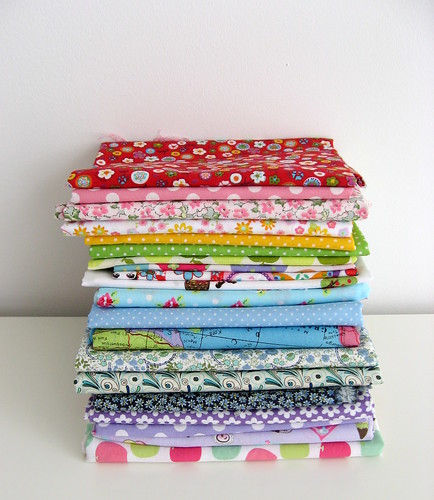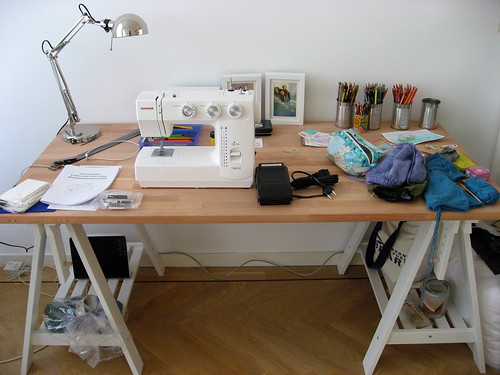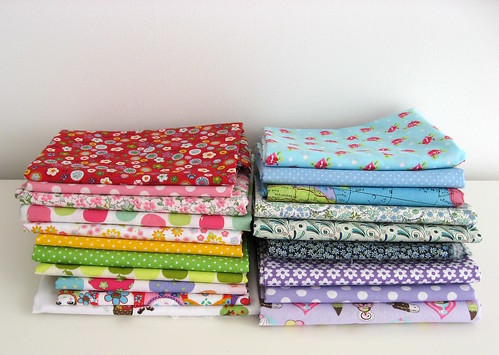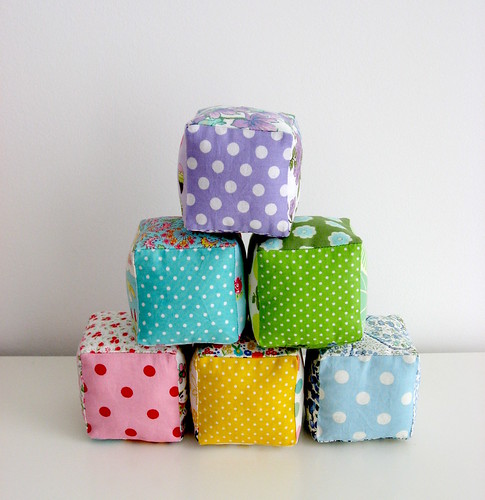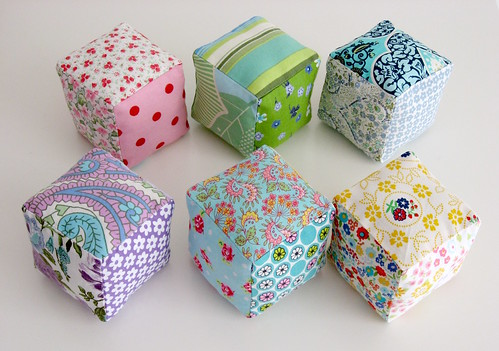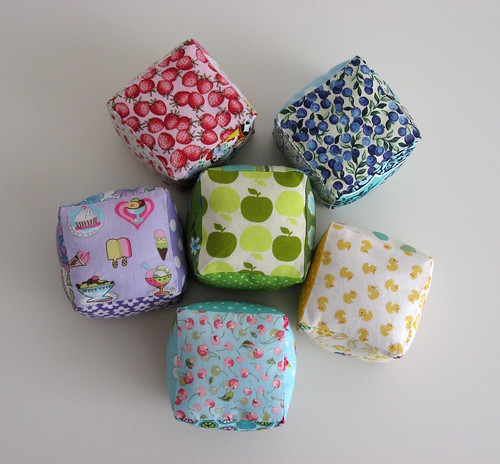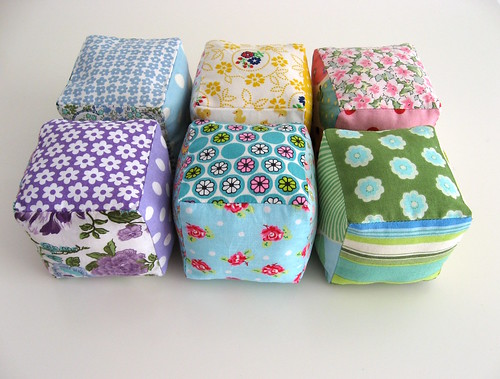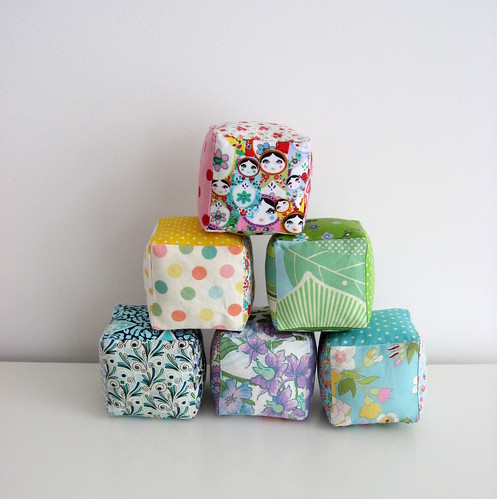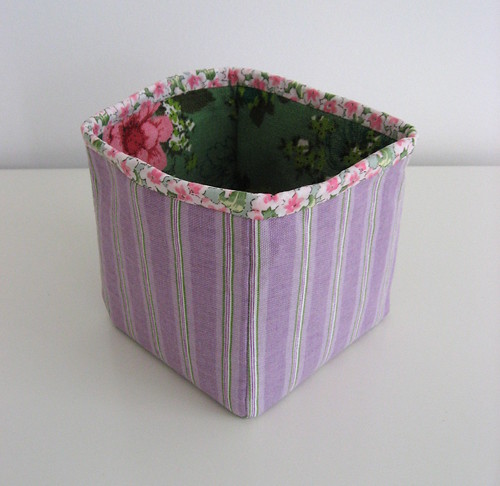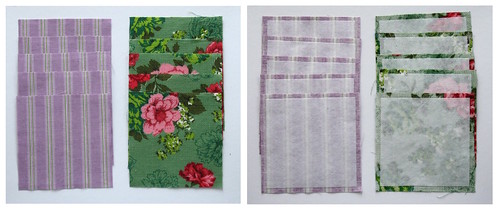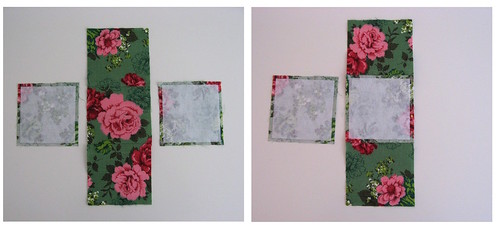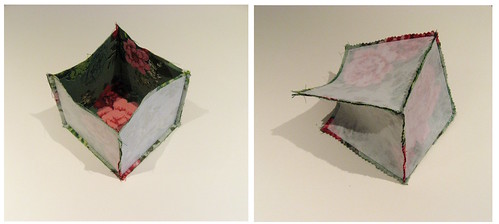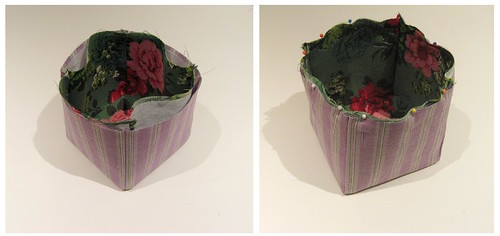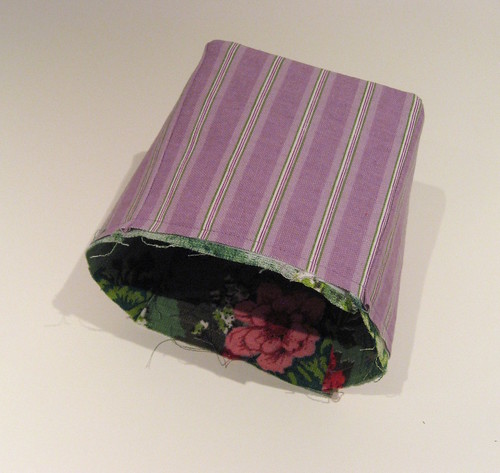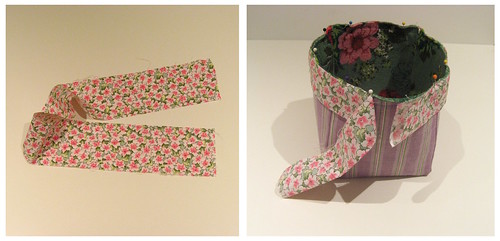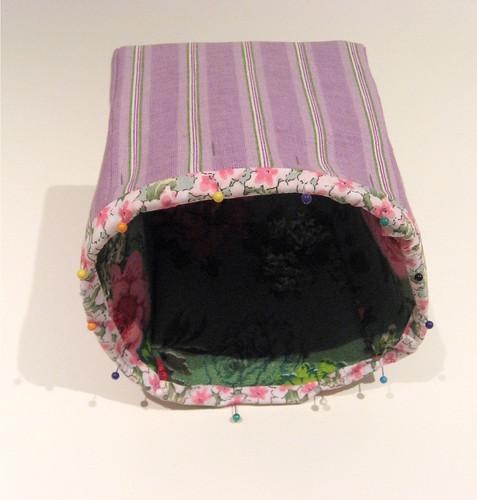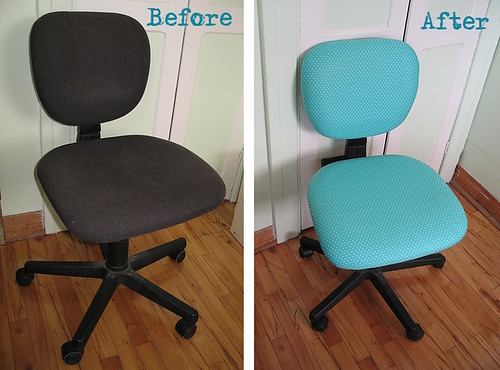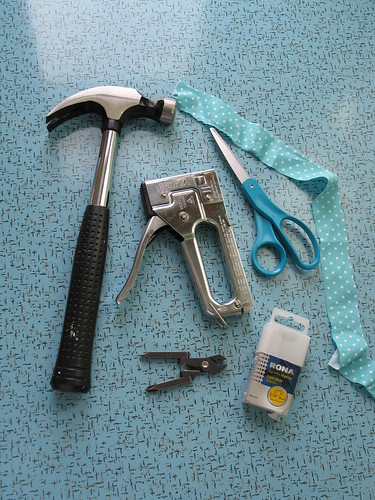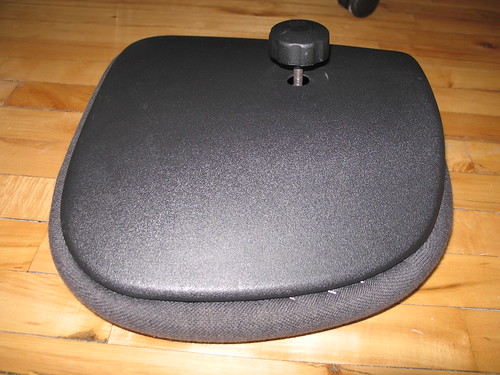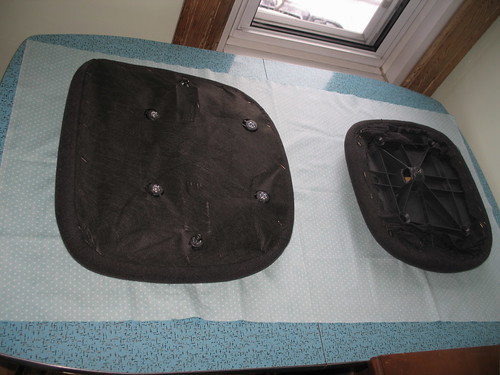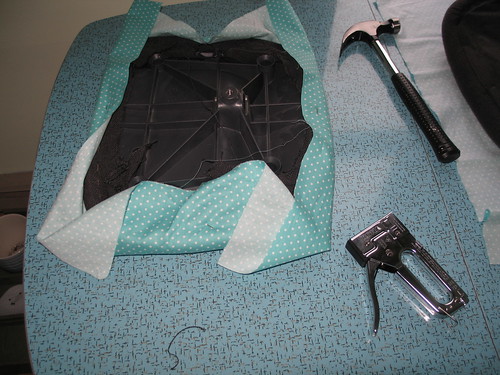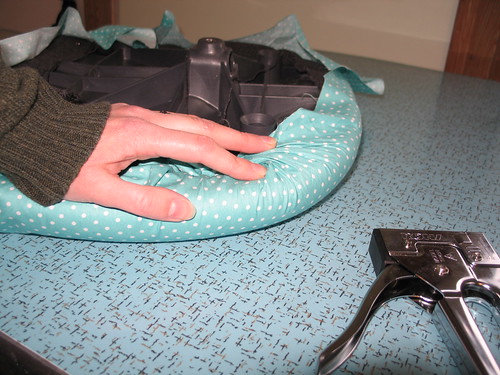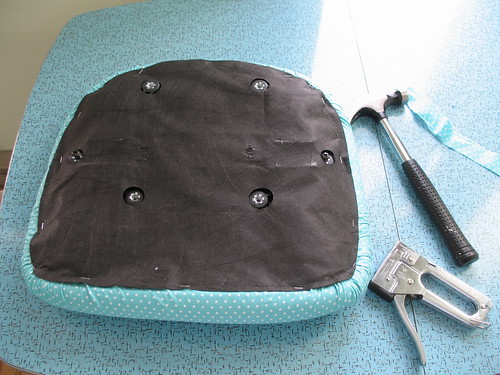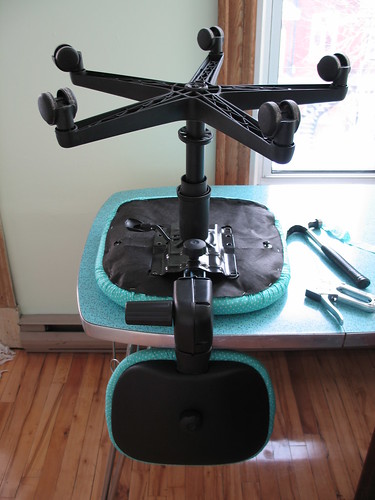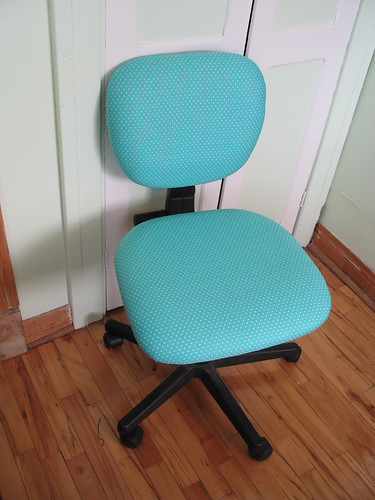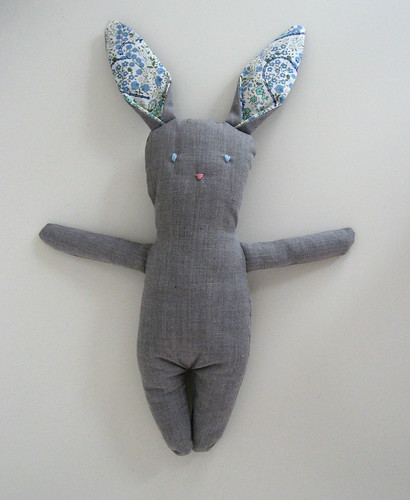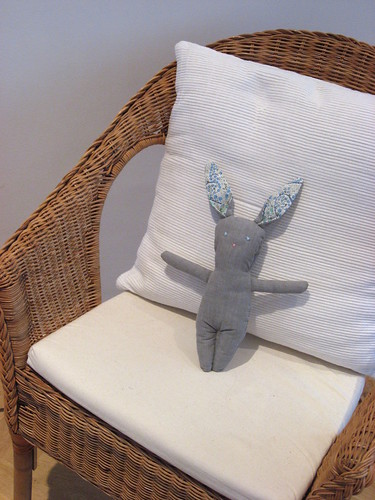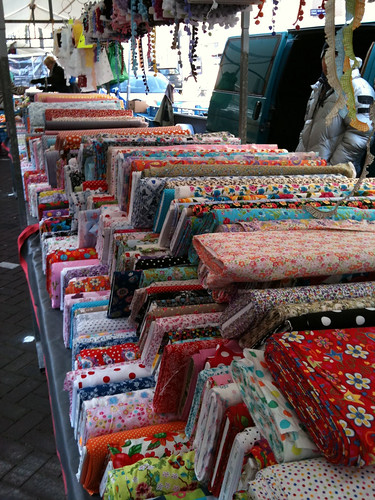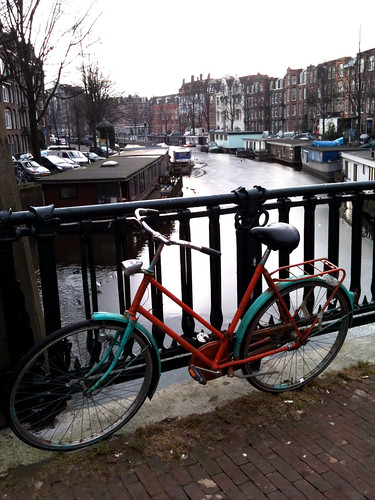
Turquoise and Orange Bicycle
Some friends of friends are also moving from Canada to the Netherlands, so I wrote up some advice based on things I wish we'd known before and immediately after arriving (and good advice that we received). I wanted to put this advice somewhere permanent and where it might help other expats coming to the Netherlands. The only bit that's not specific to moving here is the Expectations section at the end of this post, which I think probably applies to any expat adventure.
Money:
Before you leave home, set up with your bank to be able to remotely transfer money to your new account in the Netherlands and/or bring a substantial amount of money with you because it's standard to pay up to about 4 months rent up front (2 months as a deposit you'd get back, 1 month for the first month, plus 1 month worth as an agent fee if you have a housing agent). We ended up having our parents transfer money to our account, then mailing them a cheque on our Canadian accounts to pay them back because the Canadian banks wanted us to go to our branch IN PERSON to do an international transfer. You will almost certainly get a better rate on euros at your new bank here, so have the conversion to euros happen at this end.
Cheques/bank drafts are not something you will want people to send you for small amounts of money because all banking is done on the internet here and there's a 20-30 euro fee to process a bank draft. Of course, Canada is the reverse, so there's a $30 fee to transfer money internationally (which is fine if you're just doing a big amount to initially set yourself up over here, but otherwise, annoying).
Housing:
See above for upfront costs. I'm not sure how other cities vary, but in Amsterdam, most apartments available for expats are furnished and available 1-2 months in advance at most. So looking for a place to live farther in advance than that is pointless. Very often, places are advertised available "immediately". Unfurnished places seem to be
more expensive than furnished because there are fewer available in the expat market.
Marktplaats.nl is the "craigslist" equivalent here and what to look at if you want to try to find a place without a housing agent. All the super cheap housing is part of the Dutch social housing scheme and not accessible to expats (and 10+ years waiting list for the Dutch!).
Some good advice we received was to find a nice place for your first place, even if it's a little more expensive because that way if you're homesick or unhappy, at least you're not also stuck in a horrible apartment in a terrible location. It can make a big difference also to the spouse who may not have a job to escape to!
Official Paperwork:
You should expect issues with the following circular dependency: You will need an address (and possibly also your
BSN - like a SIN or SSN) in order to open a bank account which you need to have in order to rent an apartment which you need to get a BSN (they require an address). We got out of this loop because Damian's company is large and hires a lot of expats, so they have a special arrangement with the government that new hires can temporarily use the company's address. Many companies will NOT be able to provide this option. I think the way out is to get a provisional lease so you get the address part sorted and can get your bank account and BSN, but your company should be able to advise you on this if you don't have the option of using a temporary address.
In Amsterdam there is the
Expat Center which helps you fill out all your paperwork correctly. Depending on your visa status, you may also need appointments with
IND (immigration department) and/or an immigration lawyer.
Phone:
The minute you get here, I advise buying a pre-paid mobile phone so that you have a local phone number (or a local SIM card if you already have a phone that will work on the networks here). You will need to do pre-paid before you have a bank account and address, but
Vodafone at least will let you convert to a monthly account with your remaining pre-paid credit once you have sorted out the bank account/address thing.
Public Transit:
There is an
OV chipcard transit pass that you will probably find useful immediately. It's a debit-style transit pass and it's good on ALL public transit in the whole country, including inter-city trains. There is some personalized one that takes weeks to apply for and needs a picture and blah blah blah, but we prefer using the "anonymous" ones that you can buy immediately and then are not tied to a specific person (the only downside being that if you lose it, then you lose whatever money was on it).
Bicycles:
Buy a used bicycle pretty much right away, regardless of what season you arrive in. Snow and ice rarely stay for more than a week or two at a time. Currently it's 10°C and snow-free and we've been having weather like this for much of January. There is no point to buy a new bike: the good ones are way more expensive and will attract thieves. We spent about 100-150 euro each on our bikes, but that's in central Amsterdam, so you might find something good for less. If you see a new bike in this price range, I would not expect it to be very good quality.
Get the kind with back-pedal brakes, not hand brakes, and definitely no gears necessary! It's very flat here and you really don't need gears. The back-pedal brakes are what we were advised to get and I think it was good advice. Hand-brakes require more maintenance and the ones here seem worse than the ones in Canada (stiffer, less effective, overall lower quality). They are also prone to having the wires tangled or ripped out on bike racks, because the bikes are packed closely and there's often not sufficient room for the handbrakes to fit over the handlebars of the neighbouring bicycles.
Bike theft is a big problem in Amsterdam at least, but you can mostly avoid it if you're careful. Buy a good
hefty chain lock, which should cost about 50-60 euro (yes, that's half to a third the price of our bikes!). Just wrap it around under your bike seat when you're riding your bike. Never leave your bike with just the back-wheel lock on (but you'll want one of those too if the bike doesn't already have one installed).
Expectations:
We have been very happy living in the Netherlands, but the expat experience is not always easy. Expect it to take 4-6 months to get through the paperwork and feel settled. Arrange to talk to family and friends on Skype or some other video chat. We have found this a great way to not feel quite so far away from loved ones. Before moving here, we received some great advice on attitude from some friends who are living the
expat adventure in New Zealand: There will be things you will miss about home and things you don't like about your new location. If you focus on those things, you will be miserable. Instead, focus on all the things that are better and exciting about your new country and you will be happier and have a lot more fun.
We've certainly had fun this first year: discovering a new city, learning about a new culture, meeting new people (from all over the world), and travelling to other places in Europe.
Photographs and artwork by Allison Gryski. © All rights reserved.



